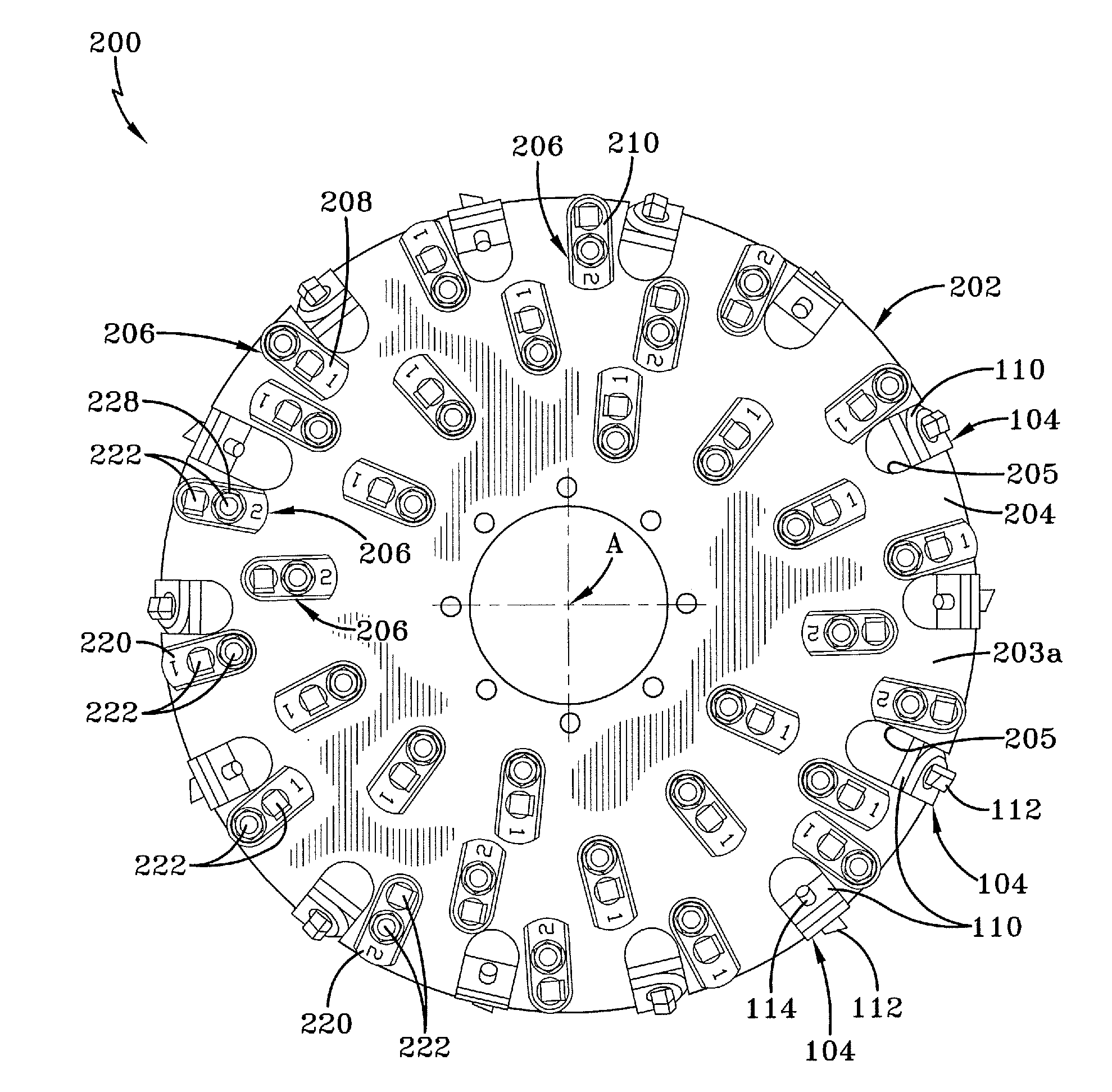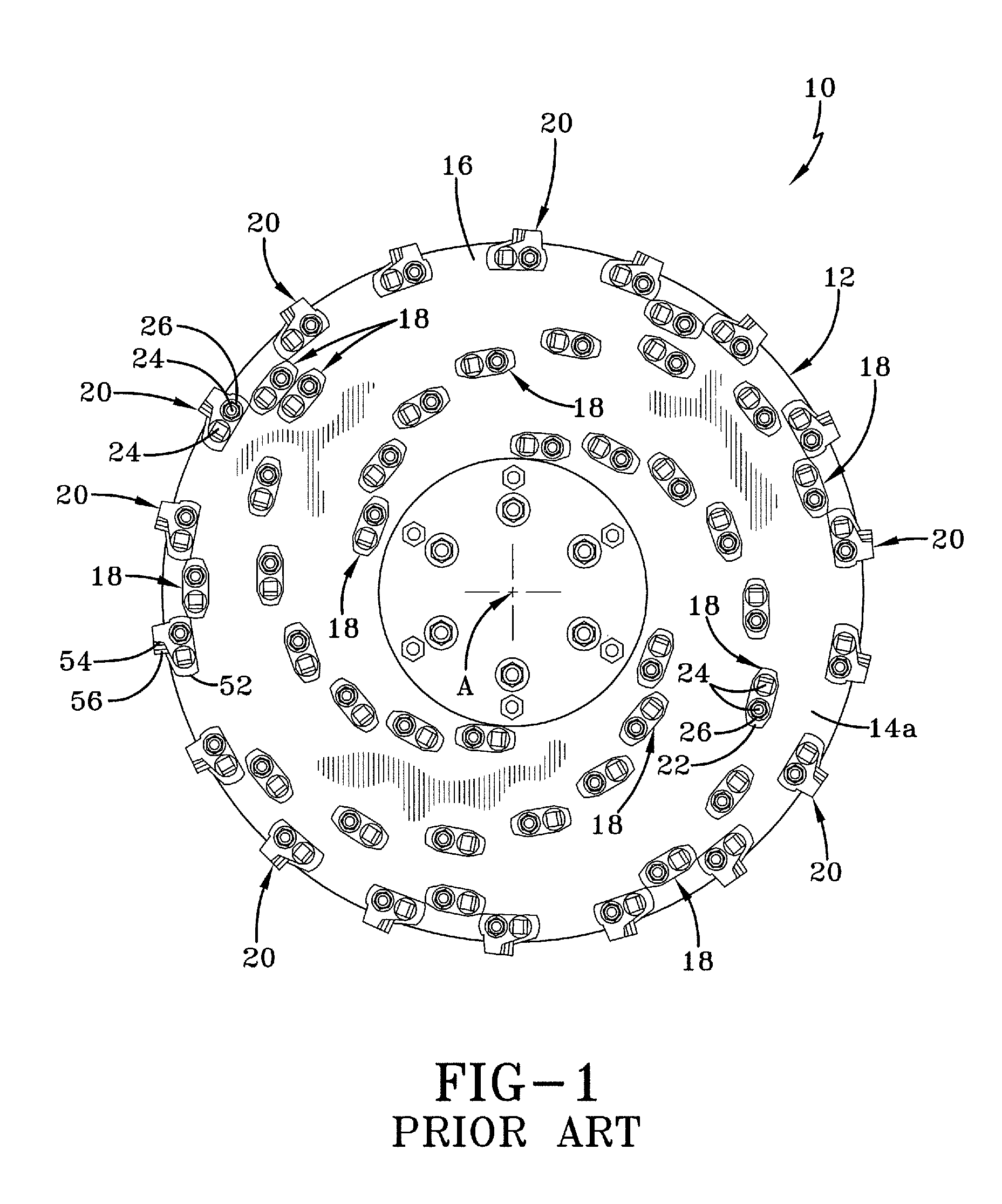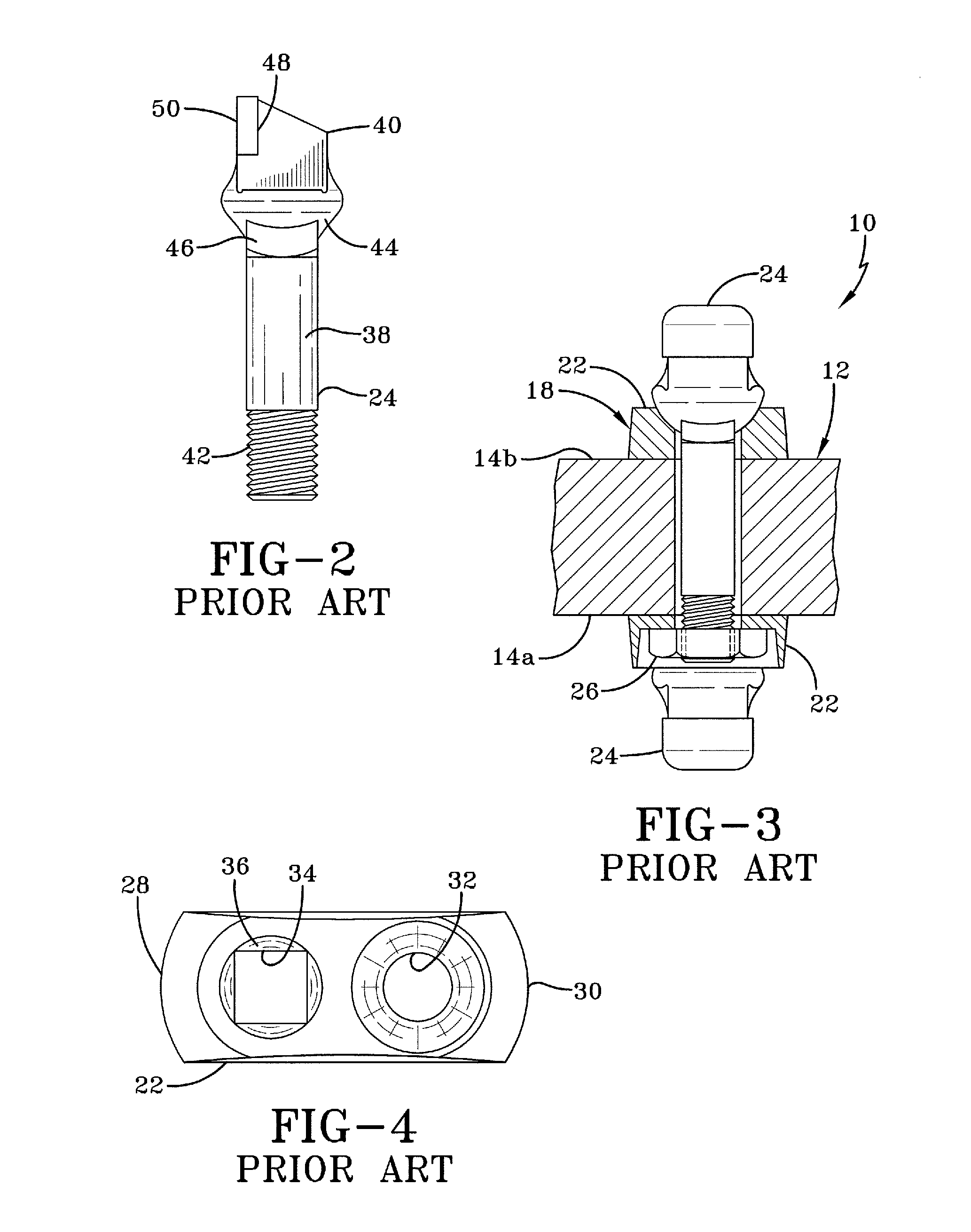Stump grinding wheel
a technology of stump grinding and grinding wheel, which is applied in the field of stump grinding wheel, can solve the problems of large areas of the periphery of the wheel unprotected, prone to extreme wear from abrasives, and large areas of the periphery of the wheel being exposed to extreme wear, so as to achieve the effect of improving the positioning, placement and/or orientation of the side cutter assembly and maintaining the optimal cutting performan
- Summary
- Abstract
- Description
- Claims
- Application Information
AI Technical Summary
Benefits of technology
Problems solved by technology
Method used
Image
Examples
Embodiment Construction
[0043]In order to better understand the stump grinding wheel of the present invention, prior art stump grinding wheels and components of the wheels are shown in FIGS. 1-6. With reference now to FIG. 1, a first prior art stump grinding wheel is indicated generally at 10 and is adapted to be bolted to a rotary drive mechanism of a stump grinding machine (not shown) for rotation about a center axis of rotation A. First prior art stump grinding wheel 10 includes a wheel disc 12. Wheel disc 12 includes a pair of opposing side surfaces 14a, 14b (FIG. 3) and a cylindrical outer peripheral surface or periphery 16, which interconnects the side surfaces. Mounted on wheel disc 12 are side cutter assemblies 18 and first prior art peripheral cutter assemblies 20.
[0044]More particularly, each side cutter assembly 18 is mounted to wheel disc 12 in a generally circumferentially-extending orientation, and the side cutter assemblies form a plurality of generally helical patterns. With additional refe...
PUM
 Login to View More
Login to View More Abstract
Description
Claims
Application Information
 Login to View More
Login to View More - R&D
- Intellectual Property
- Life Sciences
- Materials
- Tech Scout
- Unparalleled Data Quality
- Higher Quality Content
- 60% Fewer Hallucinations
Browse by: Latest US Patents, China's latest patents, Technical Efficacy Thesaurus, Application Domain, Technology Topic, Popular Technical Reports.
© 2025 PatSnap. All rights reserved.Legal|Privacy policy|Modern Slavery Act Transparency Statement|Sitemap|About US| Contact US: help@patsnap.com



